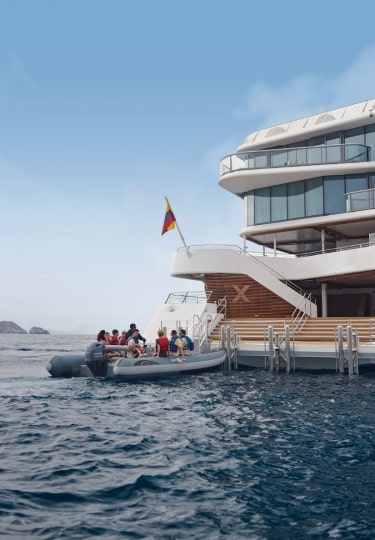Sometimes on your cruise itinerary, you’ll see the words “tender port”. But what is a tender port?
In most ports of call, your ship will dock alongside a jetty and you’ll walk down the gangway onto dry land. But not all ports in the world are able to accommodate every cruise ship. Sometimes, a ship is too long for the dock, or may have a draft that’s too deep for the harbor.
Ports may be subject to very high and very low tides, which doesn’t work for cruise ships. There may be precious coral reefs that can’t be crossed. Or navigation may simply be too tricky; you have to remember that a cruise ship can take you pretty well anywhere in the world, which includes some very small and out-of-the-way spots.
When it’s not possible to dock, a cruise ship will drop anchor in a suitably sheltered spot and lower its lifeboats. There’s no cause for alarm when you see this happening; the lifeboats on most ships double up as tenders, which means they are used to ferry passengers to and from the nearest dock.
Places where this happens are known as tender ports. Here’s all you need to know about the tender port meaning and how to make the most of the process.
How do tender ports differ from regular ports of call?
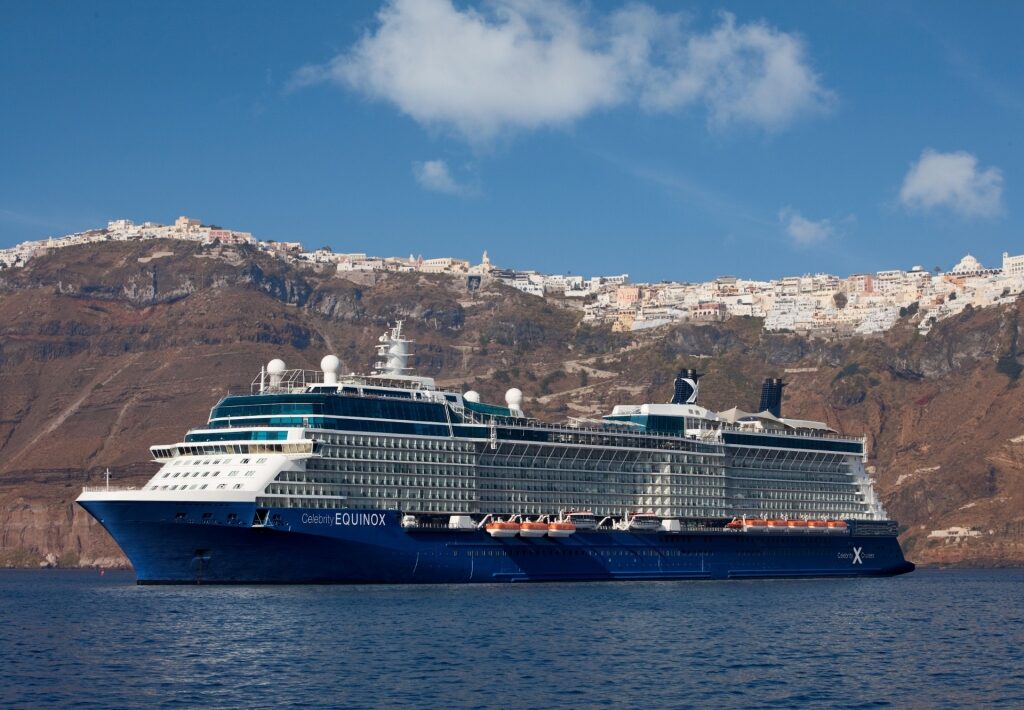
Celebrity Equinox in Santorini, Greece
Tender ports are different in that they don’t have a suitable harbor big enough to accommodate modern cruise ships. A tender port might be a small island; Grand Cayman is an example, as is Santorini, where ships tie up to big concrete buoys in the middle of a volcanic caldera.
But not all tender ports are islands; sometimes, fairly big towns and cities are accessed by tender, including Villefranche in the south of France and Waterford in Ireland.
The difference when you arrive in one of these destinations is that you’ll be invited to the ship’s tender embarkation area. You’ll swipe your SeaPass card and embark the tender, which will ferry you ashore to a landing area that’s been set up by the crew. You’ll see the ship’s tenders buzzing back and forth all day.
What are tender boats like?
Tender boats, or the ship’s lifeboats, have a surprisingly large capacity—but for normal tendering operations, they’re only ever filled to a level that’s comfortable for everybody.
The boats are enclosed to protect you from the sun, wind, and rain. They have comfortable seats and windows. They’re also stable and extremely safe.
Experienced crewmembers will help you on and off the tender once it’s safely secured to the embarkation area or the jetty. Safety rules are strictly observed; you can’t get up and walk around during a tender transfer, for example.
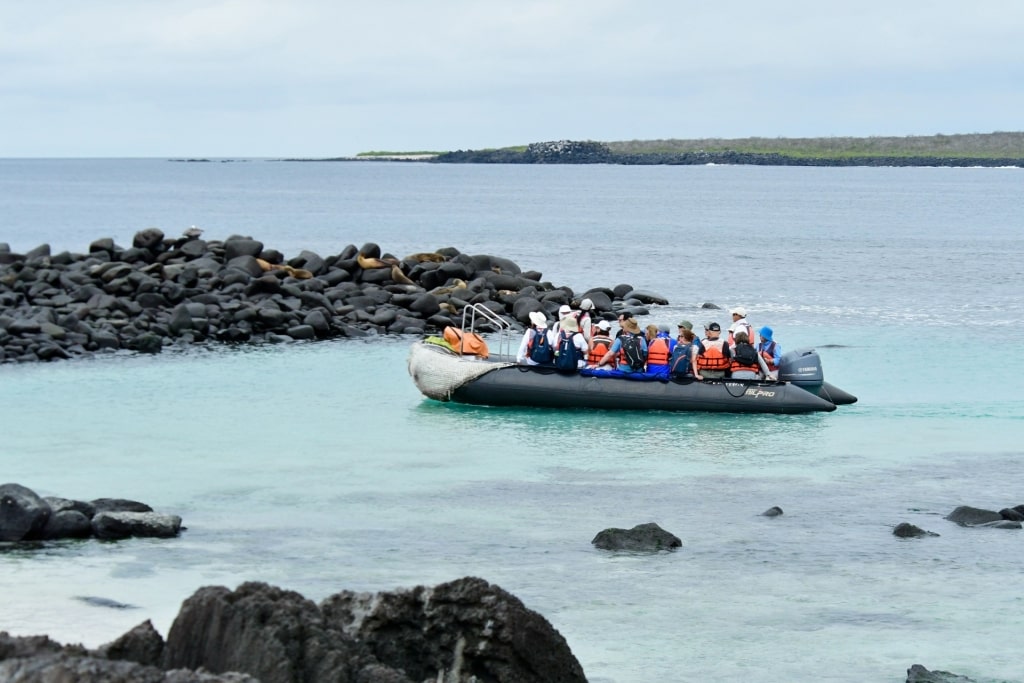
Panga in the Galapagos
In the Galapagos, where all forays ashore are by tender, the situation is different. You’ll board the ship’s pangas, or rigid inflatable boats, in small groups and zoom ashore to pull up on remote beaches or rocky landing areas.
Celebrity’s Edge series ships have the most state-of-the-art tenders in the business, with bucket seats, plenty of space, air conditioning (a rarity on a tender boat), and big picture windows so you can enjoy the views on your tender ride.
From time to time, tender operations will be in local boats where it’s a requirement of the port authority but the procedure and safety rules are exactly the same.
How long does it take to tender from the cruise ship to the shore?
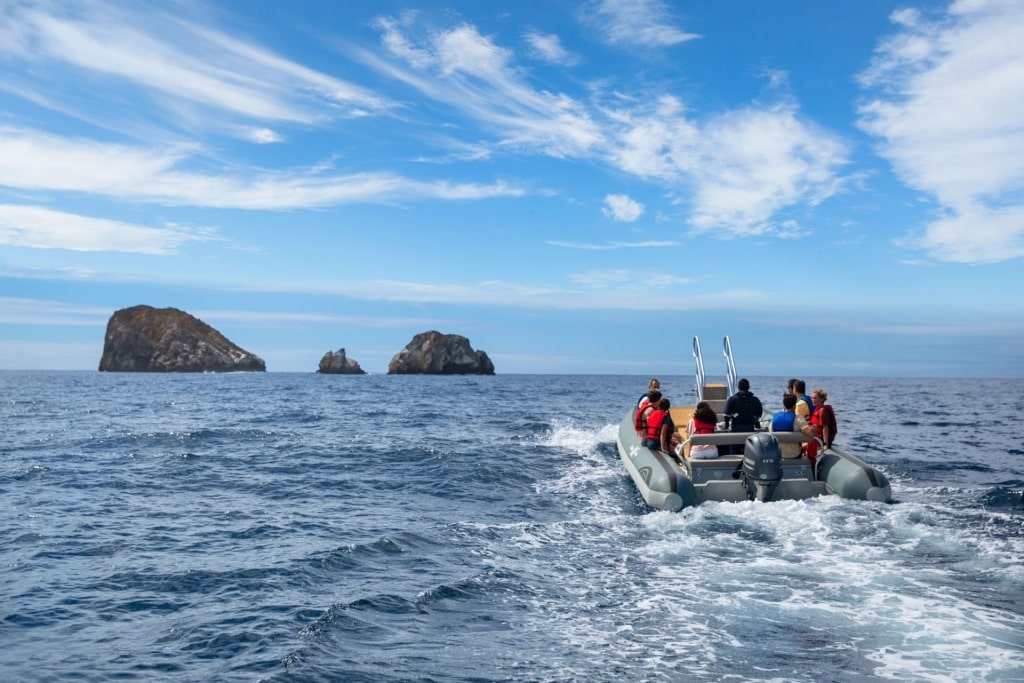
Galapagos
This depends entirely on where the ship is anchored, but the local authorities and the ship’s officers will always try to aim for the shortest distance for the tenders to travel.
You could have a ride of five minutes or as long as 20 minutes. Everything is subject to the tides, the weather, and the local conditions.
Can passengers with mobility issues or disabilities access tender ports easily?
Celebrity Cruises offers boarding and departure assistance to guests with mobility disabilities. Request assistance once you arrive at the pier or contact us prior to your cruise so that we may prioritize your needs during boarding. During peak times, there may be a wait for assistance.
Many ports provide easy access for wheelchairs and scooters. However, due to various conditions like the steepness of the gangway, tendering, weather, tidal and sea conditions, and shore-side facilities, guests using assistive devices may be precluded from getting on or off the ship.
We will make reasonable efforts to assist our guests, but for safety reasons, our staff is not permitted to lift guests or equipment. Assistance with manual wheelchairs, walkers, canes, etc. will be provided. The vast majority of tenders do not have roll-on capacity and are not able to carry mobility scooters.
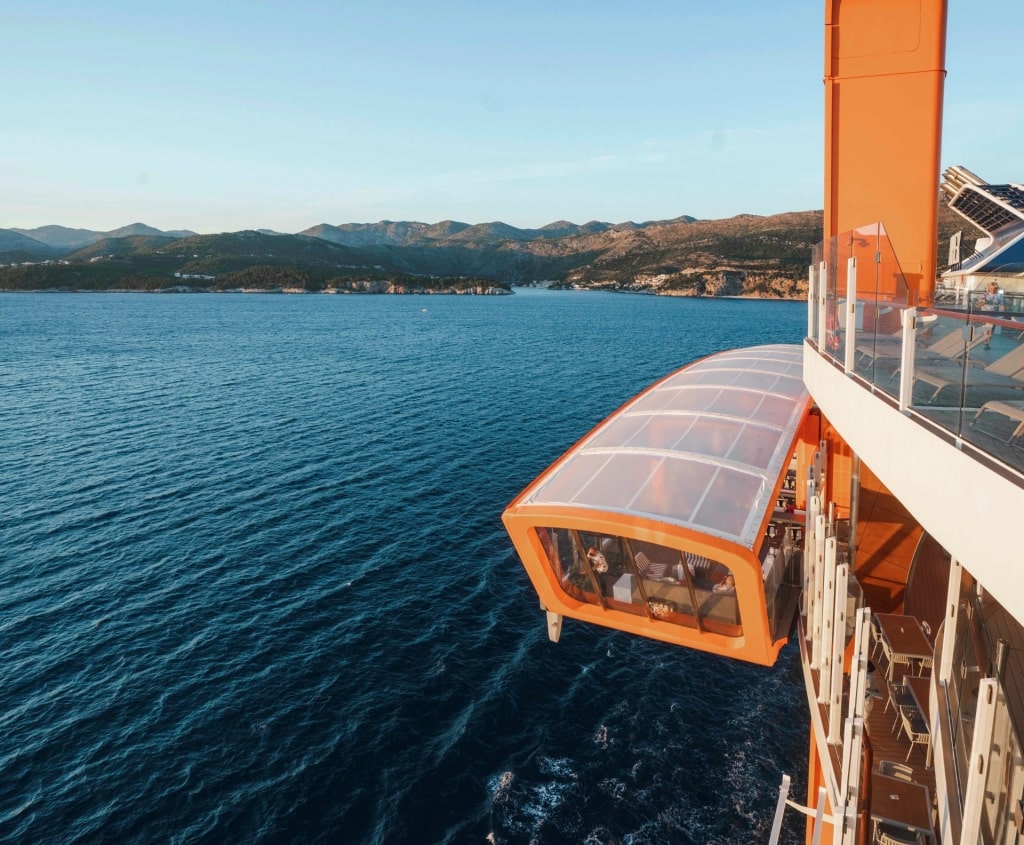
Magic Carpet
Celebrity’s Edge-series ships are different and have vastly improved tender access for wheelchair users. On these ships, the Magic Carpet, the giant, multipurpose platform suspended over the side of the ship, serves as a very stable tender embarkation area when it’s level with Deck 2.
Wheelchair users, including those using powered wheelchairs, can access the tenders by a ramp connecting the Magic Carpet with the tender launch.
Ultimately, though, the captain and crew will assess the conditions in any tender port and decide whether tender operations are safe for those with limited mobility.
Read: Accessible Travel Guide
How can I find out if my itinerary has tender ports?
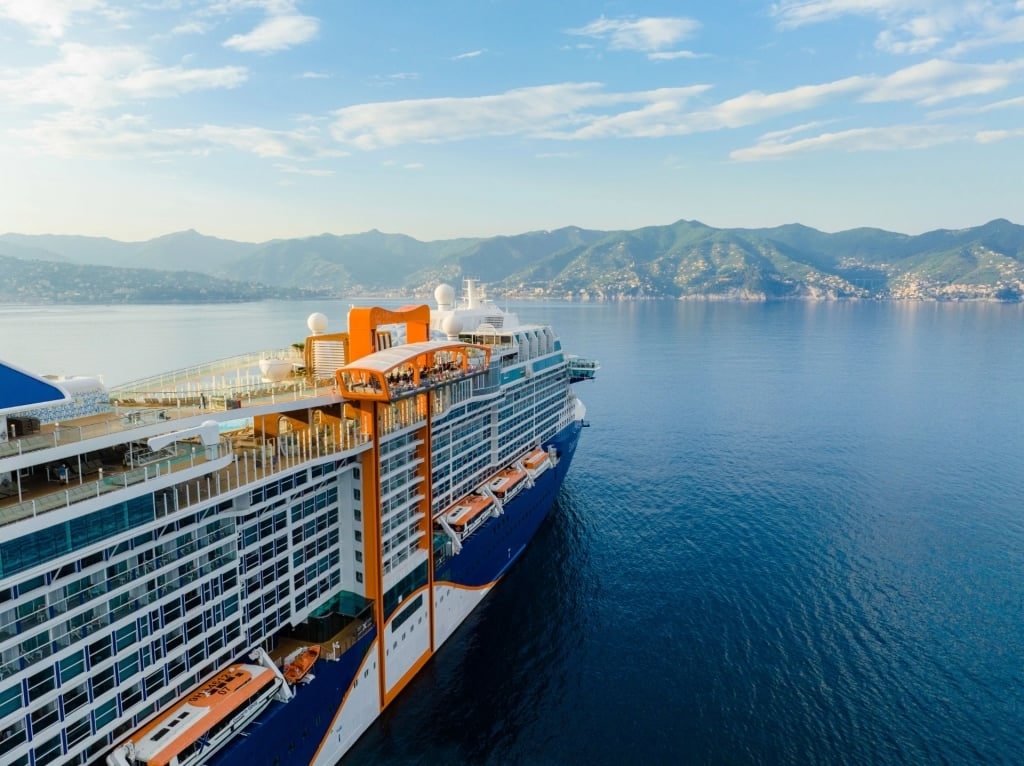
Portofino, Italy
If you are less mobile, choose your cruise itinerary carefully. Every cruise featured on the Celebrity website includes information about whether the ports of call are tender ports or places where the ship will dock alongside.
If, for example, you want to go to the Norwegian fjords, you’ll see that Flam, Olden, and Bergen are all places where the ship will be alongside a pier. But Honningsvag, in the far north of Norway, is a tender port.
If the Caribbean is calling, be aware that Belize City and Grand Cayman are tender ports. But Barbados, St. Lucia, St. Maarten, and Antigua are not. You will always have plenty of choices when it comes to itinerary planning.
Is the disembarkation process different?
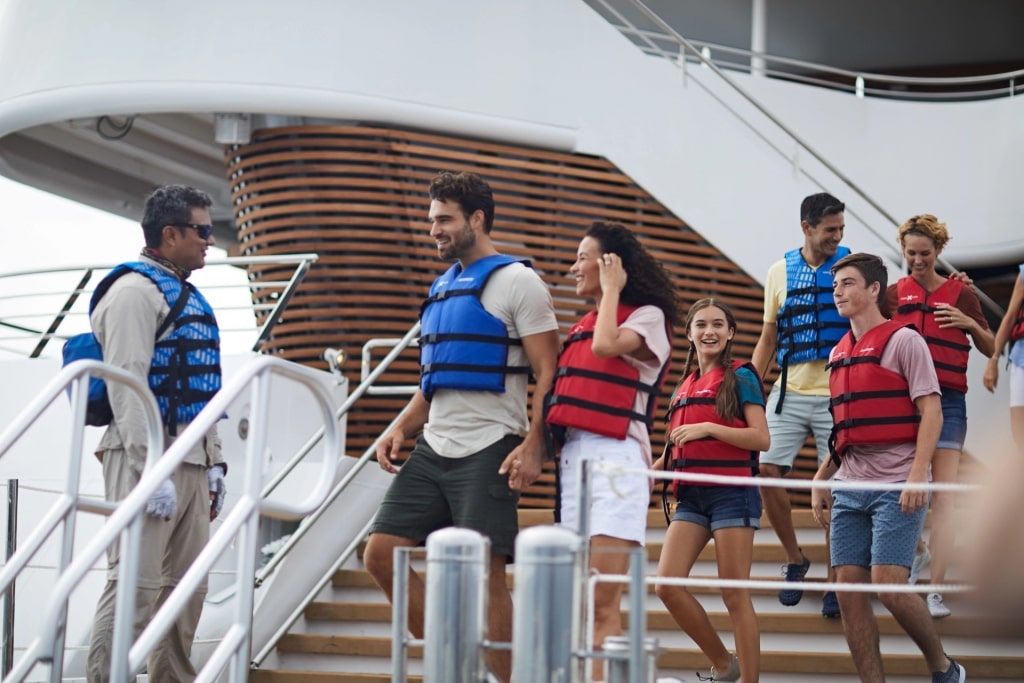
Celebrity Flora
The process of getting ashore is a little different when the ship is at anchor and the tenders are in use. There’s a procedure to ferrying everybody ashore that’s designed to keep everything running smoothly.
Once the ship is at anchor and has been cleared by the local authorities, the tenders are put in the water. If you have booked a shore excursion, you will have priority for disembarkation.
Typically, passengers on pre-booked shore excursions will be asked to gather in one of the ship’s lounges. The group will then be led by a crew member to the tender embarkation area.
Guests who have chosen The Retreat® will also have priority tender embarkation, one of many good reasons to elevate your vacation with this premium experience.
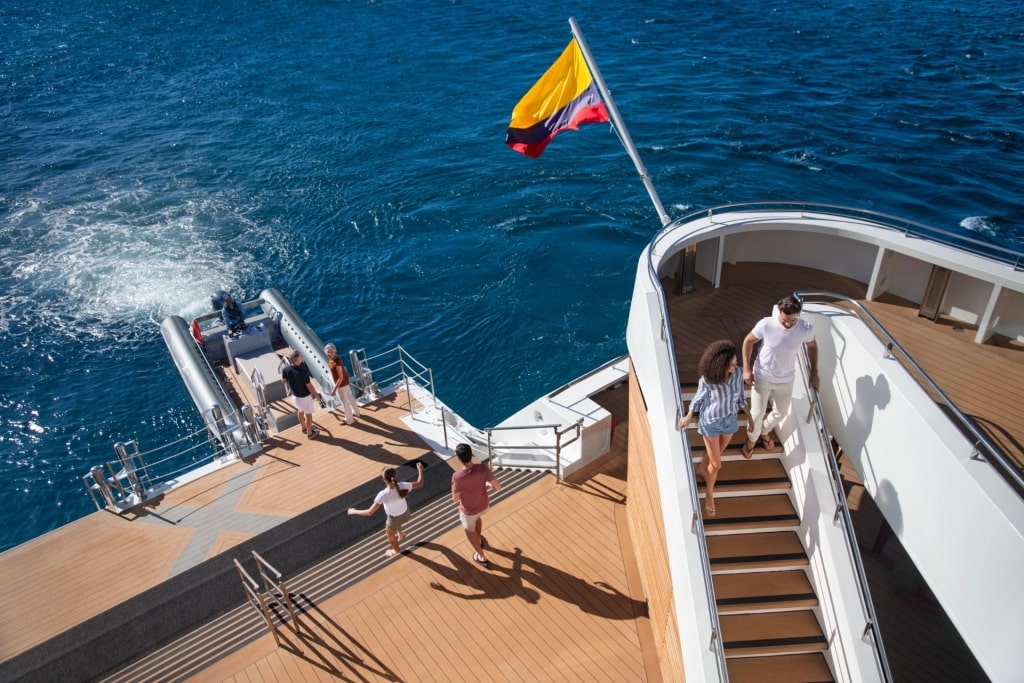
Celebrity Flora
Guests going ashore independently will need to wait until the shore excursions have departed before they go ashore. A ticketing system will be used in some ports, whereby you collect tender tickets for your party and head down to the tenders at your allocated time.
When it’s time to sail to the next port, you’ll have been told when the last tender departs from the dock, so arrive in good time. The embarkation area on the dock will always be manned by crew members, with water and shade available.
If a large number of guests arrive at once for the last tender, don’t worry—you won’t be left behind. The boats will keep going back and forth until everybody is safely on board.
Do I need to plan my day differently?
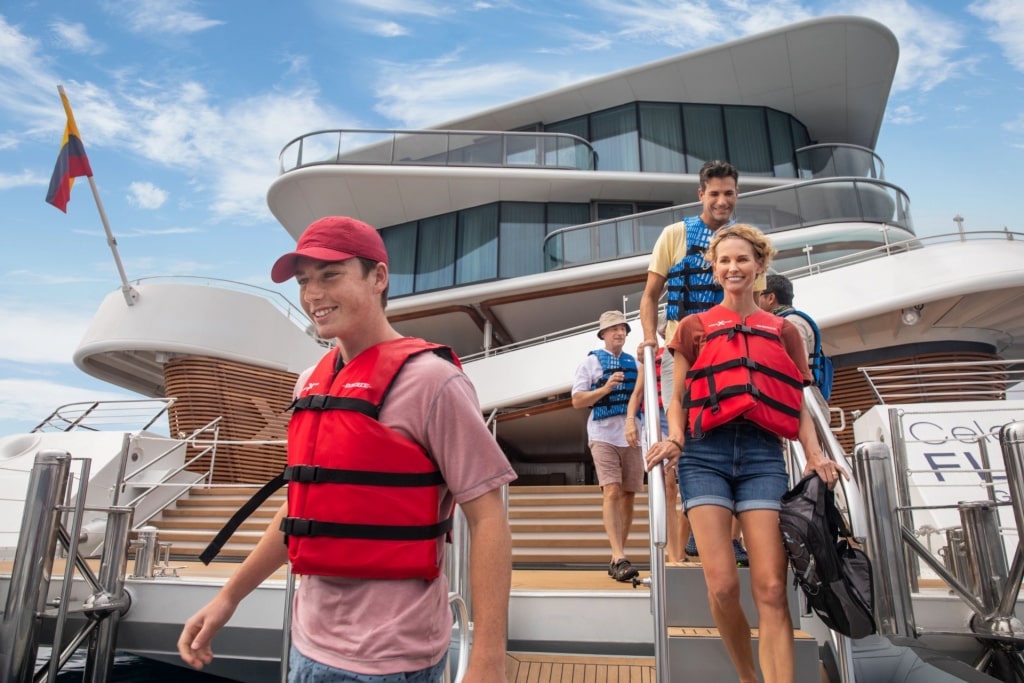
Celebrity Flora
There are a couple of considerations for planning your day in a tender port.
First, wear comfortable shoes to board the tender; you are stepping onto a moving vessel, so this is not a time for heels. You might want to bring water for the ride if it’s a hot day, too.
If you’re prone to motion sickness and the tender ride is a long one, consider taking medication before leaving the ship.
Make sure you have everything with you for the day. If you’ve left something vital behind, it’s time consuming to board a tender to get back to the ship, collect your belongings, and then take yet another tender back to the dock.
When you return to the tender at the end of the day, have your SeaPass card ready to show the crew. You will not be allowed to board the tender without this.
How can I make the most of a tender port?
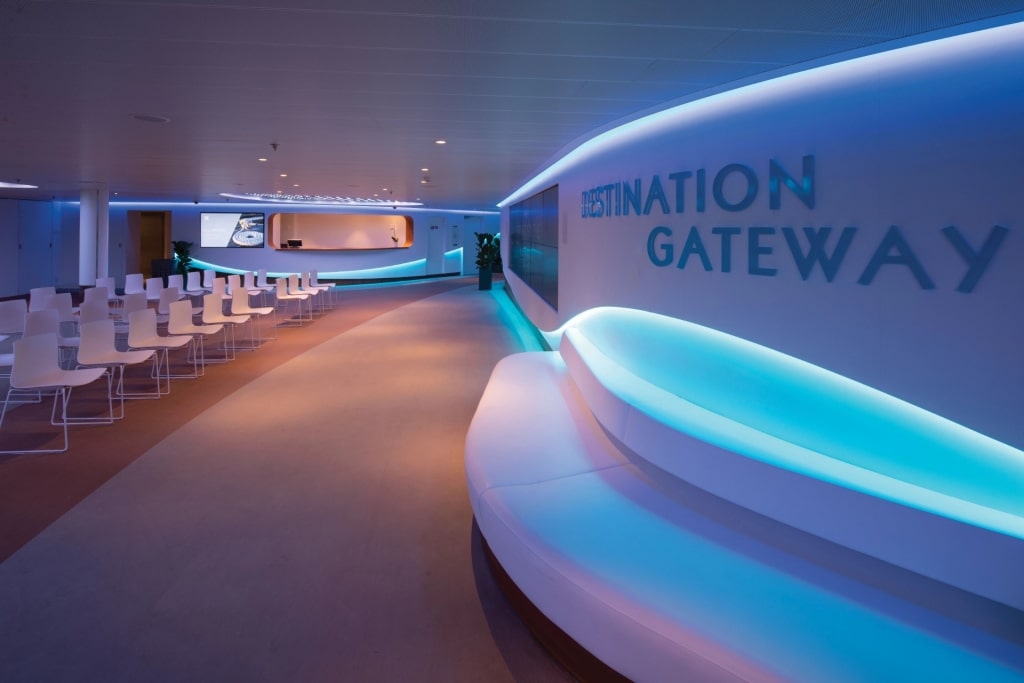
The Destination Gateway
Riding in the ship’s tenders can be fun. Celebrity’s Edge-series ships have turned tender embarkation into an adventure, thanks to The Destination Gateway, a sleek, multipurpose environment that leads you to the Edge Launches (the tenders) and your adventure ashore.
Giant LED screens display highlights of the destination as you wait in air-conditioned comfort, the excitement mounting. You’ll then step out onto the Magic Carpet, the multipurpose platform that’s cantilevered over the side of the ship. When it’s level with Deck 2, it serves as a stable tender embarkation area. You can board the tender easily from here.
A tender ride can be a great opportunity to snap the best shot of your ship at anchor, too. Have your camera ready and get a seat by the window to prepare.
Tender ports can also offer spectacular views of the destination, much more so than a busy commercial port where you could be docked alongside container ships. In Santorini, you’ll have dramatic views up at the black and red cliffs of the caldera, brilliant white towns spilling over the edge.
From Villefranche, the tender port for Nice, there are sweeping views from the ship of the glittering Côte d’Azur and the hazy mountains beyond.
What are some of the most popular tender ports that cruise ships visit?
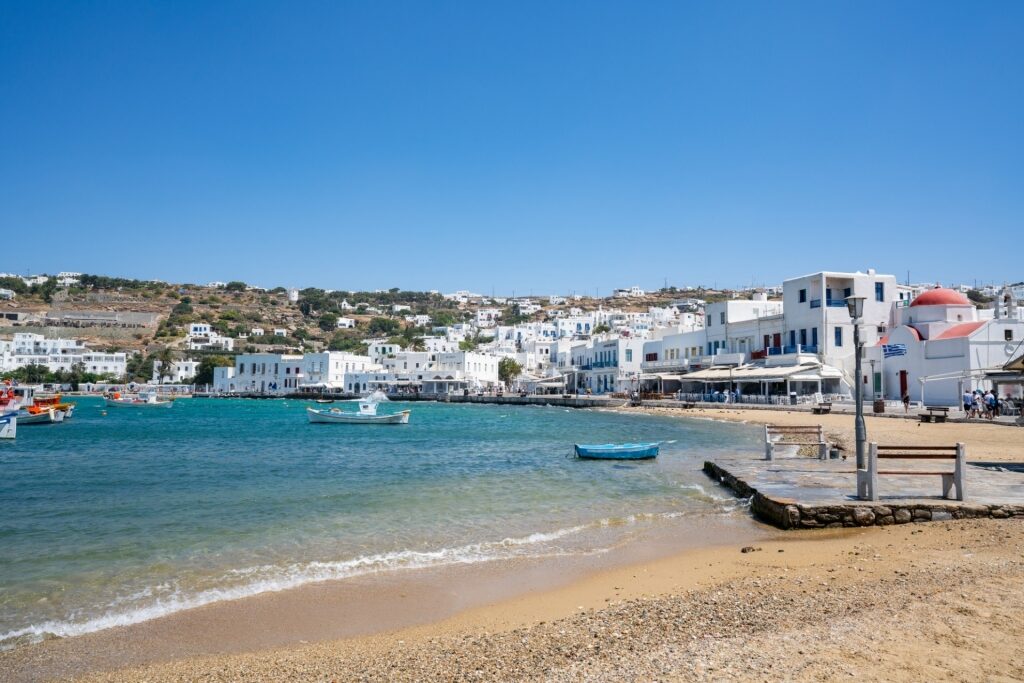
Mykonos, Greece
Often, ports that require tender access are some of the most scenic. A lot of the Greek Islands, for example, were built for the ferries that provide vital transportation routes, but do not have harbors big enough to accommodate cruise ships.
Mykonos is usually a tender port, with tenders dropping you next to the old fishing harbor, right by the tangled alleys and alluring shops and restaurants of the old town. Santorini is, too, and in this instance, cruise lines have to use the local tenders rather than their own lifeboats.
If you’re going ashore independently here, allow plenty of time to return, as there can be long lines for the cable car that connects Fira, the capital, to the dock.
The alternative is to walk down the zig-zag donkey path, which takes about 30 minutes. Luckily, there are several tavernas on the dock offering ice-cold beers while you wait for your boat back to the ship.
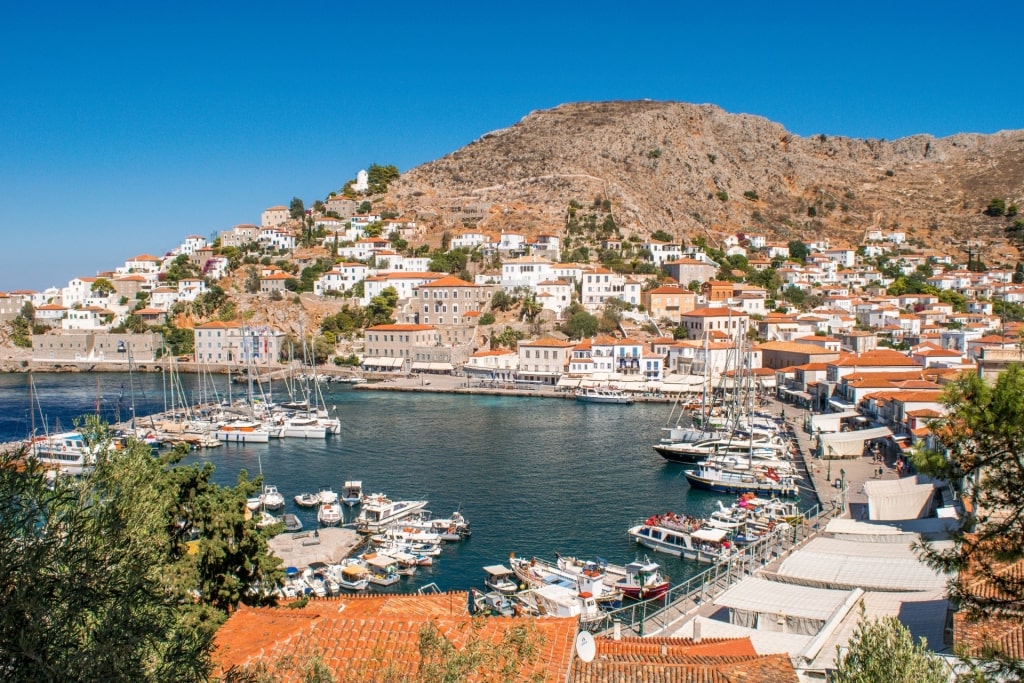
Hydra, Greece
Beautiful Hydra is also a tender port. As you approach the horseshoe-shaped harbor, you’ll have fantastic views of the superyachts and fishing boats framed by an amphitheater of colorful old mansions and whitewashed houses.
In the Caribbean, you’ll arrive in the heart of George Town, Grand Cayman by tender. Ships use local tenders here, which are much bigger than lifeboats, making the disembarkation process extra-speedy.
If your travels take you to Belize City, tenders will drop you at the convenient location of the Tourism Village, a custom-built complex of shops, restaurants, and bars. This can be a fun place to pass a little time after your tour, too, before you board the tender back to the ship.
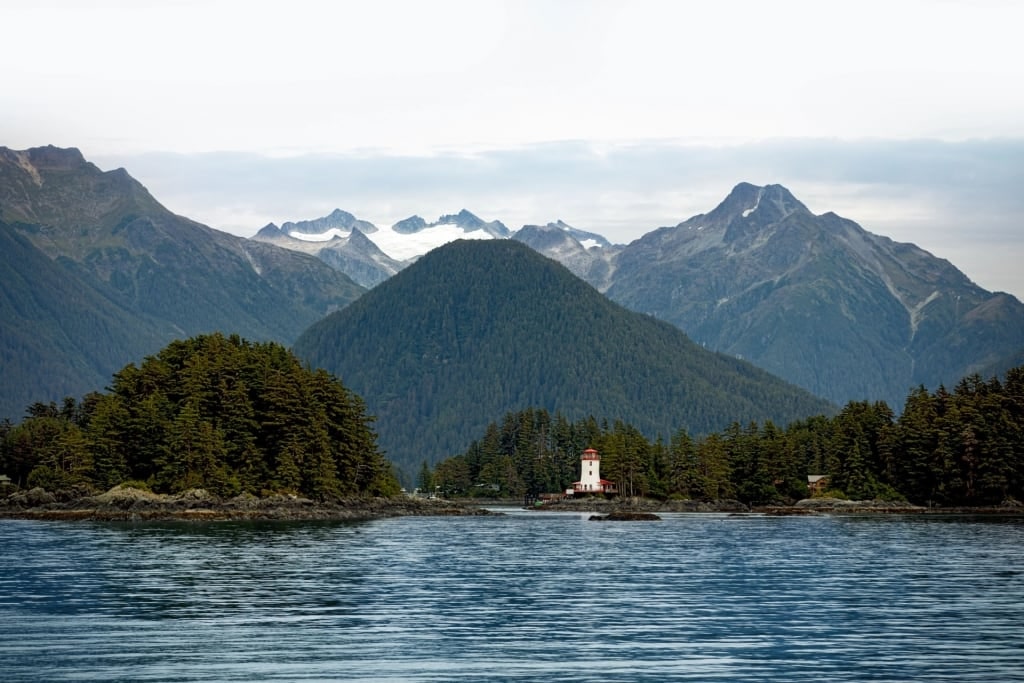
Sitka, Alaska
Occasionally, ports in Alaska require tender operations when there are several cruise ships in town. But this is no hardship; Alaska’s waters are so rich in wildlife that you could spot whales, dolphins, and sea otters during your tender ride. Sitka is a case in point.
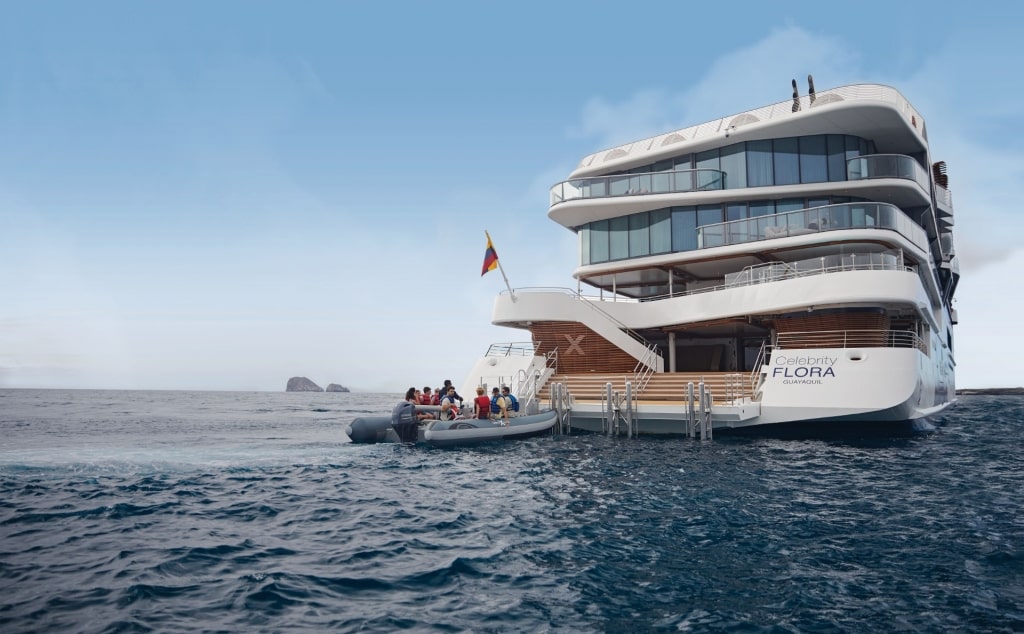
Galapagos
Are you inspired to explore the world with Celebrity Cruises? Browse itineraries here and plan your dream vacation.
